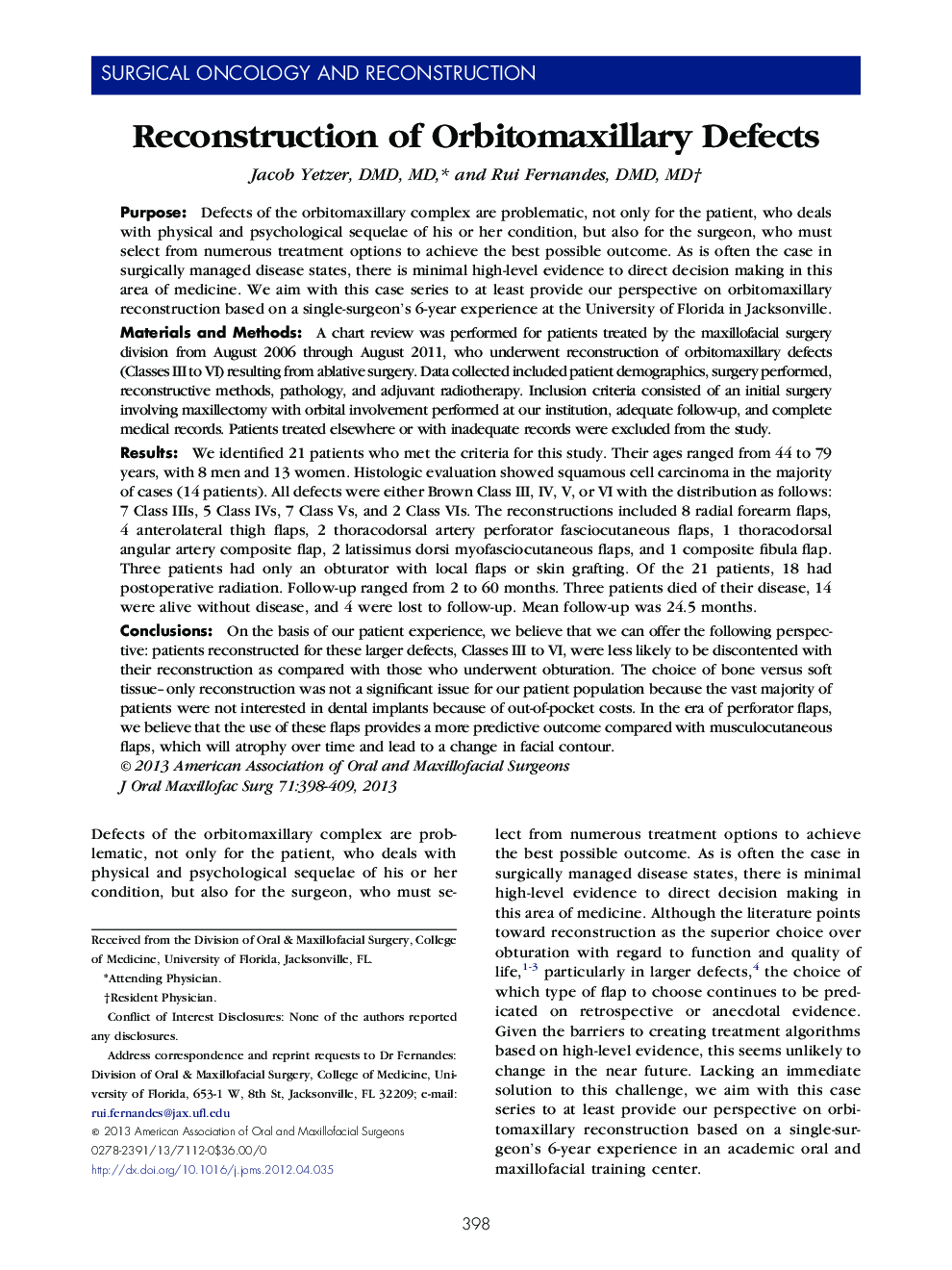| کد مقاله | کد نشریه | سال انتشار | مقاله انگلیسی | نسخه تمام متن |
|---|---|---|---|---|
| 3152761 | 1198013 | 2013 | 12 صفحه PDF | دانلود رایگان |

PurposeDefects of the orbitomaxillary complex are problematic, not only for the patient, who deals with physical and psychological sequelae of his or her condition, but also for the surgeon, who must select from numerous treatment options to achieve the best possible outcome. As is often the case in surgically managed disease states, there is minimal high-level evidence to direct decision making in this area of medicine. We aim with this case series to at least provide our perspective on orbitomaxillary reconstruction based on a single-surgeon's 6-year experience at the University of Florida in Jacksonville.Materials and MethodsA chart review was performed for patients treated by the maxillofacial surgery division from August 2006 through August 2011, who underwent reconstruction of orbitomaxillary defects (Classes III to VI) resulting from ablative surgery. Data collected included patient demographics, surgery performed, reconstructive methods, pathology, and adjuvant radiotherapy. Inclusion criteria consisted of an initial surgery involving maxillectomy with orbital involvement performed at our institution, adequate follow-up, and complete medical records. Patients treated elsewhere or with inadequate records were excluded from the study.ResultsWe identified 21 patients who met the criteria for this study. Their ages ranged from 44 to 79 years, with 8 men and 13 women. Histologic evaluation showed squamous cell carcinoma in the majority of cases (14 patients). All defects were either Brown Class III, IV, V, or VI with the distribution as follows: 7 Class IIIs, 5 Class IVs, 7 Class Vs, and 2 Class VIs. The reconstructions included 8 radial forearm flaps, 4 anterolateral thigh flaps, 2 thoracodorsal artery perforator fasciocutaneous flaps, 1 thoracodorsal angular artery composite flap, 2 latissimus dorsi myofasciocutaneous flaps, and 1 composite fibula flap. Three patients had only an obturator with local flaps or skin grafting. Of the 21 patients, 18 had postoperative radiation. Follow-up ranged from 2 to 60 months. Three patients died of their disease, 14 were alive without disease, and 4 were lost to follow-up. Mean follow-up was 24.5 months.ConclusionsOn the basis of our patient experience, we believe that we can offer the following perspective: patients reconstructed for these larger defects, Classes III to VI, were less likely to be discontented with their reconstruction as compared with those who underwent obturation. The choice of bone versus soft tissue–only reconstruction was not a significant issue for our patient population because the vast majority of patients were not interested in dental implants because of out-of-pocket costs. In the era of perforator flaps, we believe that the use of these flaps provides a more predictive outcome compared with musculocutaneous flaps, which will atrophy over time and lead to a change in facial contour.
Journal: Journal of Oral and Maxillofacial Surgery - Volume 71, Issue 2, February 2013, Pages 398–409